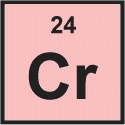I may have mentioned that one of my goals is to
increase my writing output, increase my publication rate, and increase the
relevance of my writing. In my WRITING ADVICE column, I had started using an
article my sister sent me by Lisa Cron. She has
worked as a literary agent, TV producer, and story consultant for Warner
Brothers, the William Morris Agency, and others. She is a frequent speaker at
writers’ conferences, and a story coach for writers, educators, and journalists.
I am going to fuse the advice from her book WIRED FOR STORY with my recent trip
to South Korea. Why? I
made a discovery there. You’ll hear more about it in the future as I work to
integrate what I’m learning from the book, the startling things I found in South
Korea, and try and alter how I write in order to create characters that people will
care about, characters that will speak the Truth, and characters that will clearly
illustrate what I’m writing about.
“Remember when Luke has to drop the bomb into
the small vent on the Death Star? The story writer faces a similar challenge of
penetrating the brain of the reader. This book gives the blueprints.” – David
Eagleman
“The reader expects the protagonist to not only have a past, but one that
affects the future.”
“None of us sprang
into being fully formed. We humans – and hence our protagonists – all have a
past that has brought us to this very moment. What’s more we make sense of what
happens to us in the present based on what our past experience has taught us.
Thus a protagonist without a story-specific past is a generic, cardboard
cutout.
“Ask yourself: What
happened in my protagonist’s past that landed her in the situation she’ll find
herself in on page one? How will what her past has taught her affect the way
she’ll react to what happens in the story?”
For the past few
months, I’ve been practicing my writing and trying to align it to both this
article (in which I first discovered Lisa Cron’s insights) and exploring how I
can integrate insights from her book, WIRED FOR STORY, into my own stories.
I just started a
story that will be divided into three parts, the first and last will be short
and will be “side stories” to the longer main story. In classic art, such an
arrangement is called a tryptic and often depicts three different but related
scenes. One such example looks like this:
More modern pieces
are simply continuations of a painting or a photo.
In it, I have
struggled for YEARS to create a memorable character name Carlos Bander. I have
known things about him, but when I read Cron’s article and book, I suddenly
realized that I don’t know anything about him!
In the triptych I’m
writing, I’ve had to dig into his personality. Initially, the first triptych
was supposed to be some 4000 or so words long (I’ll allow myself up to 5000
words). I took my time developing the character…and suddenly found out that I
was well on the way to creating a story that was 8000 words long.
I HAD to cut it down,
but how could I reduce the number of pages? I had to develop the character,
right? But how could I make a deeply drawn character that readers could identify
with?
After reading
WIRED FOR STORY and knowing that it was impossible for me to “apply” all four
hundred pages of advice, I went through and condensed out the points most
important to my own writing. The “long list” contained 52 points and inspired
me to discover that out of Cron’s last name, I could take the first two letters
and associate them with an element of the periodic table whose atomic mass was 52 – the element Chromium.
Plated onto other metals, it creates a brilliant, mirror-like surface used to
decorate, accent, or protect metals that corrode easily, or reduce friction on
surfaces.
I quickly found
that even 52 points were hard to apply. So I condensed once more , shortening sentences
and coming up with a list of things I could DO.
In creating my new
character, I started to use them as if they were tools. I started to grow him
in ways he’d never gone before. In this first story of the triptych, I found
that pages of internal musing had gotten me very, very slowly to where I wanted
to be. Looking at the list, I held it out and started to pull real application
points to him. A few of them: “Story is how a character reacts; to the plot which is what happens”; “…something is at stake on the first page”; “…confront
their inner demons”; “…world view is knocked down”; “Everything that can go
wrong, should”; “threat should be active”.
I restarted the
story – making him lose his job (he’d already lost his wife); taking his home
away from him – both legally and literally; and then getting kicked out on the
street. Which is where I wanted him to be because he needed to confront his
inner demon: inaction on his part given that he knew he regularly dealt with
homeless kids, some of whom had been damaged by profound trauma. He’s aware
that he’s not doing enough, but has no idea where he should go with that, so he’s
been drifting.
In this world,
something happens. He DOES have skills, and since his wife’s death, he hasn’t
been using the skills. But the issues are bigger. FAR bigger than just the ones
he can see on Earth. There are issues that have interstellar ramifications; and
he can make a difference on that scale.
But first he has
to get past refusing to deal with the issues on a local scale.
Lately, Carlos has
started to come alive to me. I don’t WANT to push him this hard, but I think he’s
made of tough enough stuff to deal with it. We’ll see. Maybe even YOU’LL see. I’ll
see if the “Payoff is possible”…
PostScript: And the Korea connection? Virtually everyone I met there was either affected by the Korean War (or 625 (June 25, [1950] as they refer to it) or has grown up under the shadow of the war becoming a shooting war rather than a stalemate war...this does something to people. As everyone deals with this kind of trauma differently, the people of South Korea are all very different...
PostScript: And the Korea connection? Virtually everyone I met there was either affected by the Korean War (or 625 (June 25, [1950] as they refer to it) or has grown up under the shadow of the war becoming a shooting war rather than a stalemate war...this does something to people. As everyone deals with this kind of trauma differently, the people of South Korea are all very different...
Resource: https://www.creativelive.com/blog/essential-storytelling-techniques/,

_MET_DP273206.jpg/1280px-Annunciation_Triptych_(Merode_Altarpiece)_MET_DP273206.jpg)

No comments:
Post a Comment